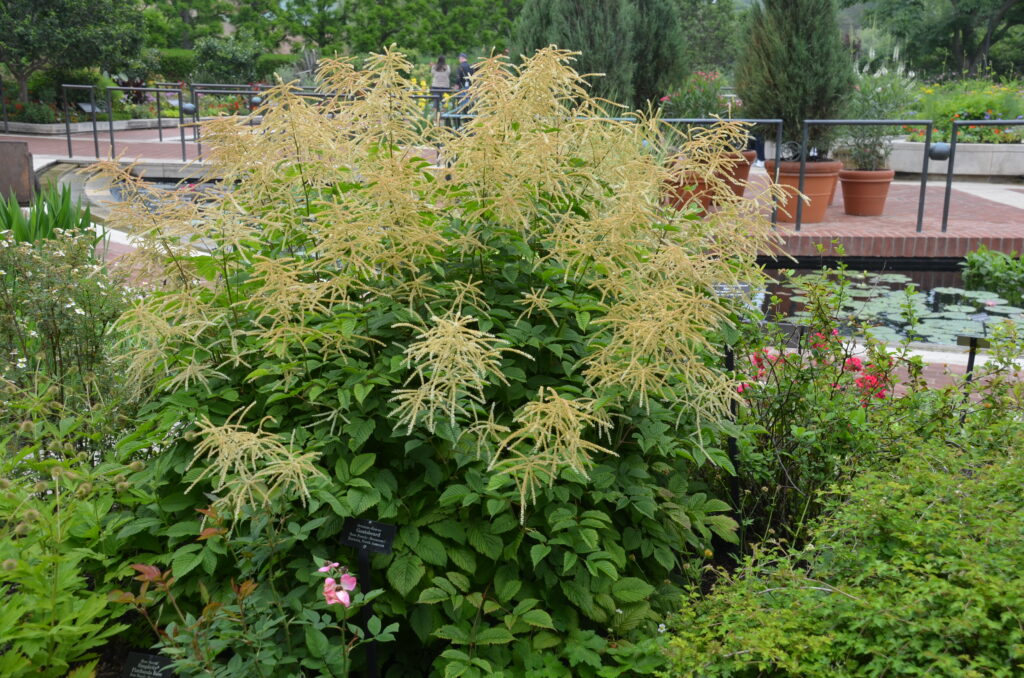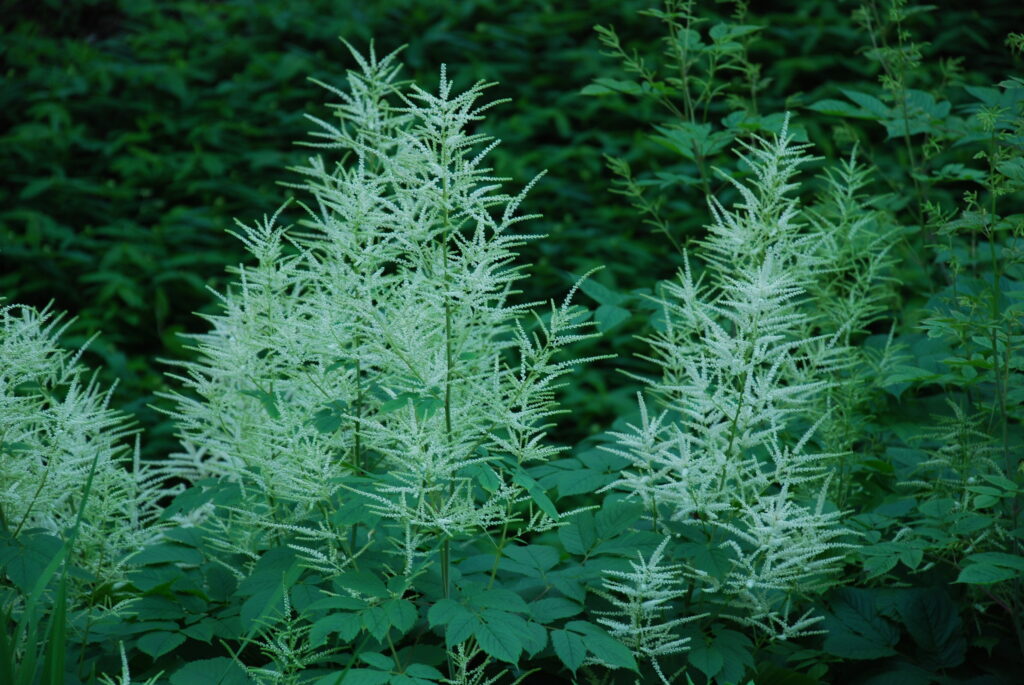
Goatsbeard (Aruncus dioicus) or “goat’s beard” is a North American perennial that produces feathery plumes of cream-colored flowers in late spring or summer. Goatsbeard is also indigenous to western Europe. This clump-forming woodland plant is hardy in zones 3-7a (?) and appears to flounder under the intense summer heat in Georgia and the Carolinas. The arching plumes are densely covered with small florets in 20-inch branched clusters.
Goatsbeard is often mistaken for Astilbe and both have dark green pinnately compound leaves. The perennial is dioecious (separate male and female plants); flowers on male plants are showier on female ones.
Flowers are at their peak for about 10 days and make good cut flowers. Female plants produce tiny brown seed capsules, which are poisonous. After flowering the plumes turn tan or light brown above the 3-4 feet mounds of finely dissected foliage. Each leaf has 20 or more toothed oval leaflets.
In the garden goatsbeard grows slowly the first few seasons. It grows best in moist, rich, well-drained soil in partial shade, although it will do fine in full sun if given consistent moisture. Set in multiples of 3-4 plants, spacing them 2-4 feet apart. Within 3 years, plants should fill-in and offer a spectacular floral show.

Goatsbeard is a relatively low maintenance plant. Keep the soil moist during dry spells. Cut back old stems in fall to just above ground-level and mulch with leaf compost.
Goatsbeard has no significant insect or disease problems and is reported to be deer resistant. Propagate by division or grow from seed.
Over 3-5 years goatsbeard looks shrub-like in a sunny perennial border or in a woodland landscape area. Over time plants will self-seed freely.
Addendum: “Dwarf Goat’s Beard” (Aruncus aethusifolius), native of Korea is a good choice in a smaller garden. It produces short spikes of cream-white flowers in June. Utilize as edging along a woodland path or grow in a front border; at its best in moist soil and in sun to partial shade. Deadhead faded flowers to encourage repeat blooming.

 Posted in
Posted in 
